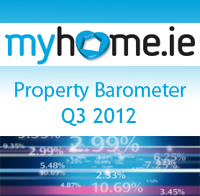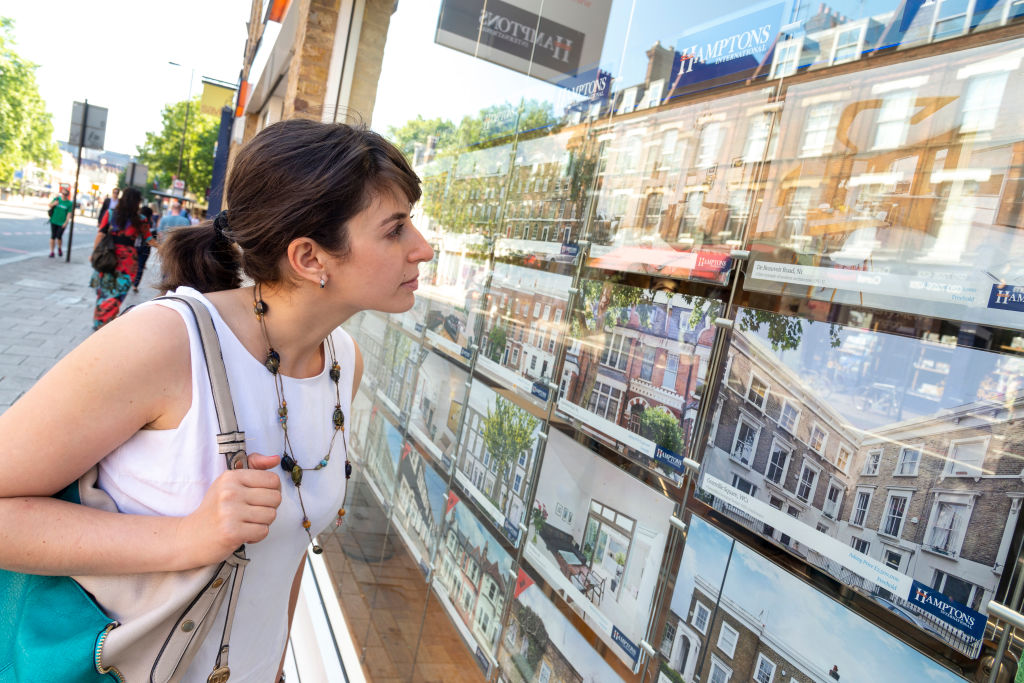- Dublin house price rise 1.6% - the first increase in 6 years
- Rate of house price decline nationally continues to moderate
- Prices declined by 2.2% in Q3 - Annual rate of decline is 14.3%
- Average asking price nationally is now €207K; down 50% from peak
- Report Download
Monday 1st October 2012.

Average mix-adjusted property prices rose by 1.6% in Dublin in Quarter 3 compared to a 4.7% fall in the previous quarter.
The average mix-adjusted property price in Dublin is now €240K, 55% below the peak in Q4 2006.
Nationally, house prices are continuing to fall but the rate of decline is moderating. In Q3 mix-adjusted prices fell by 2.2% compared to 3.2% in Q2 and 7.2% in Q1. The average mix-adjusted asking price nationally is €207K, which is 50% below the peak.
The author of the report, Caroline Kelleher from DKM Economic Consultants pointed out that while the latest figures are encouraging, particularly in the capital, the property market as a whole will not recover until the wider economic picture improves.
“We can see several signs of stabilisation in key segments of the market. For example, nationally the asking price for a 3 bed semi detached house has remained constant for the past three quarters, while 2 bed apartment prices also seem to have stabilised. In addition to the figures outlined above, consumer confidence and affordability continue to improve while we have also seen a modest increase in mortgage draw-downs. These are all positives.
However uncertainties about property tax, water charges, an austere budget and external factors affecting the wider economy will continue to weigh heavily on any potential recovery. The sooner the uncertainties are removed over areas within our own control the sooner the property market will be able to function again,” Kelleher said.
New properties continued to record a modest quarterly rate of decline in the quarter at 1.9%, just up from the previous quarter when it was 1.2%. The decline in mix-adjusted second-hand property prices mirrors the overall figures, slowing down to 2.1% from 3.2%.
Angela Keegan Managing Director of MyHome.ie said the rise in Dublin house prices was driven by fundamental laws of supply and demand.
“After six years of constant price falls this is very welcome news indeed. Our Dublin stock is down 20% from 5,960 to 4,780 in the space of 3 months and that kind of fall is something we have not seen in many years. Nationally, the asking price for 3 bed semis have remained constant so far this year and that is also encouraging, as this is the type of property typically sought by first time buyers.
“We have always said that any recovery in house prices would begin in the capital and we believe that process is now underway. However given the excess supply situation which exists in several parts of the country and the variable factors which will impact property prices in the future, the path to recovery is unlikely to run smoothly,” Keegan said.
The average time to go sale agreed remains at 5 months in Dublin, while in the rest of Leinster it is 8 months. In Munster it’s 10 months and in Connaught/Ulster it’s 11 months.
Median asking prices were almost unchanged in Cork city in Q3 falling by just 0.5%, to go below the €200K mark to €199K. Three years ago exactly Cork prices fell below the €300K mark for the first time. Galway also recorded a relatively modest fall of 1.27% to €195K.
The picture was very different in Waterford which recorded the biggest fall of all the cities at 5.9%. This brings median prices in the city down to €160K, the same as Limerick, where prices fell by 3%.
Report Downloads
Ends.
For Further Information
Contact Kieran Garry,
Gordon MRM,
01-6650455 or 087-2368366
Note to Editor
Asking prices versus transaction prices: During the boom period when prices (and incomes) were rising and the number of buyers exceeded the number of sellers, transactions prices would have been significantly higher than asking prices, whereas now in recessionary times, asking prices are typically what vendors aspire to. As the market has adjusted downwards over the past four years and transactions have plummeted, asking prices have also had to adjust down¬wards. In today’s market characterised by oversupply in some locations and a lack of mortgage finance, transactions prices tend to be below asking prices as what buyers are willing to pay or can afford is much lower now than during the boom years. The gap should narrow, however, as sellers become more realistic and as the demand/supply balance is addressed.







